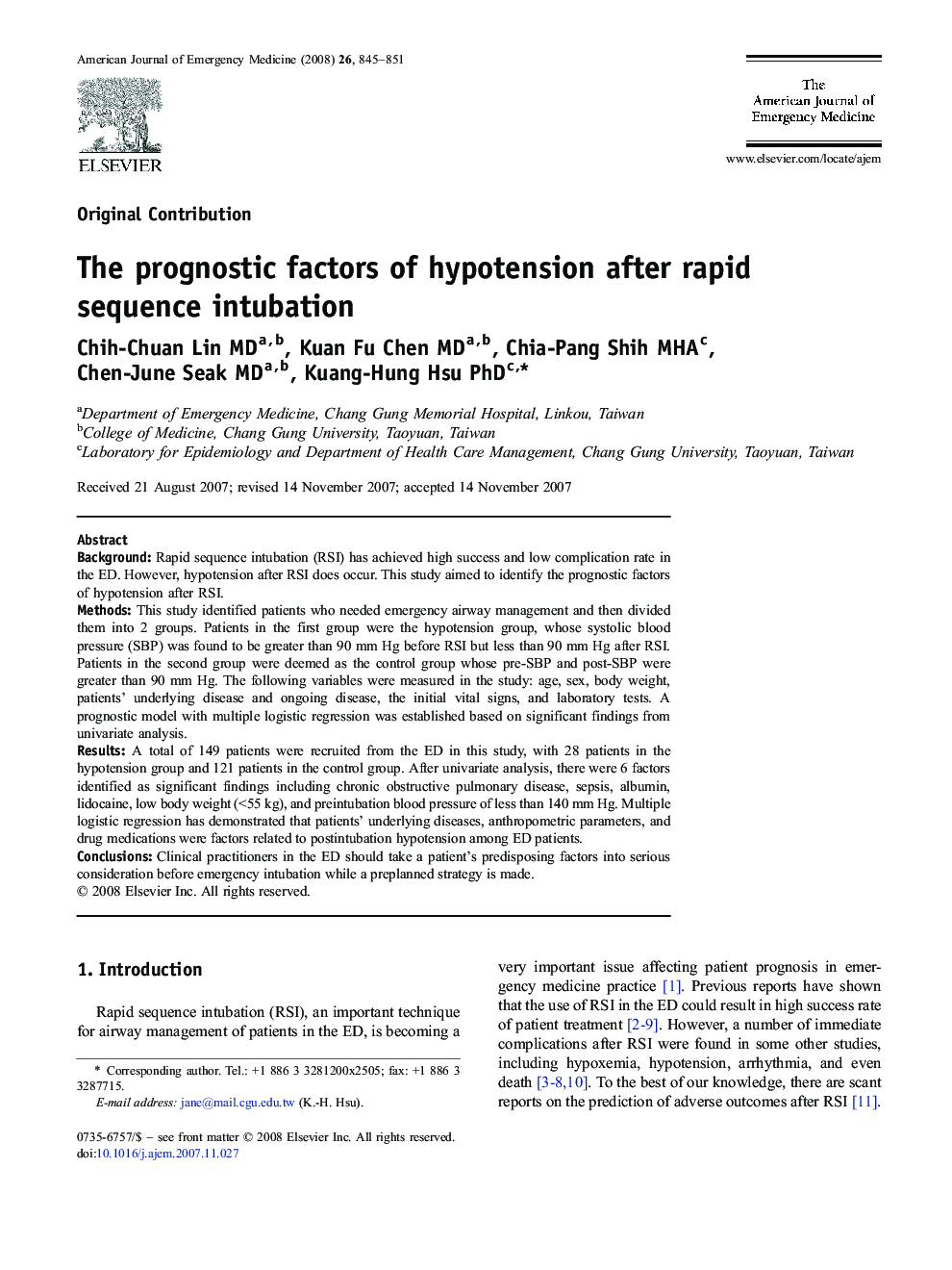| Article ID | Journal | Published Year | Pages | File Type |
|---|---|---|---|---|
| 3227010 | The American Journal of Emergency Medicine | 2008 | 7 Pages |
BackgroundRapid sequence intubation (RSI) has achieved high success and low complication rate in the ED. However, hypotension after RSI does occur. This study aimed to identify the prognostic factors of hypotension after RSI.MethodsThis study identified patients who needed emergency airway management and then divided them into 2 groups. Patients in the first group were the hypotension group, whose systolic blood pressure (SBP) was found to be greater than 90 mm Hg before RSI but less than 90 mm Hg after RSI. Patients in the second group were deemed as the control group whose pre-SBP and post-SBP were greater than 90 mm Hg. The following variables were measured in the study: age, sex, body weight, patients' underlying disease and ongoing disease, the initial vital signs, and laboratory tests. A prognostic model with multiple logistic regression was established based on significant findings from univariate analysis.ResultsA total of 149 patients were recruited from the ED in this study, with 28 patients in the hypotension group and 121 patients in the control group. After univariate analysis, there were 6 factors identified as significant findings including chronic obstructive pulmonary disease, sepsis, albumin, lidocaine, low body weight (<55 kg), and preintubation blood pressure of less than 140 mm Hg. Multiple logistic regression has demonstrated that patients' underlying diseases, anthropometric parameters, and drug medications were factors related to postintubation hypotension among ED patients.ConclusionsClinical practitioners in the ED should take a patient's predisposing factors into serious consideration before emergency intubation while a preplanned strategy is made.
